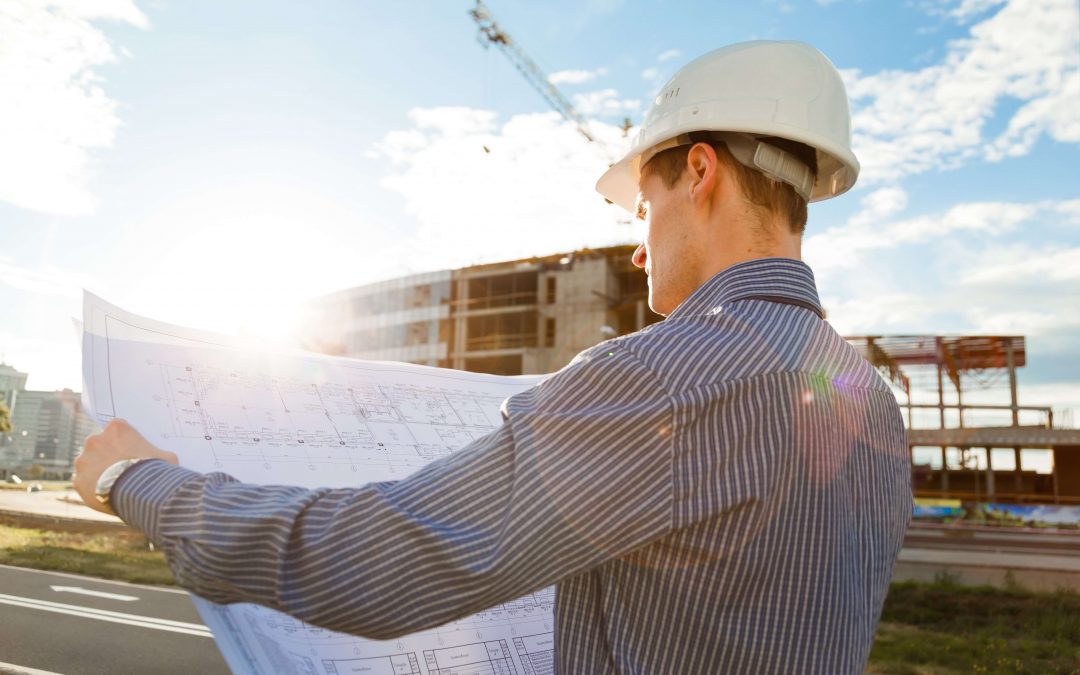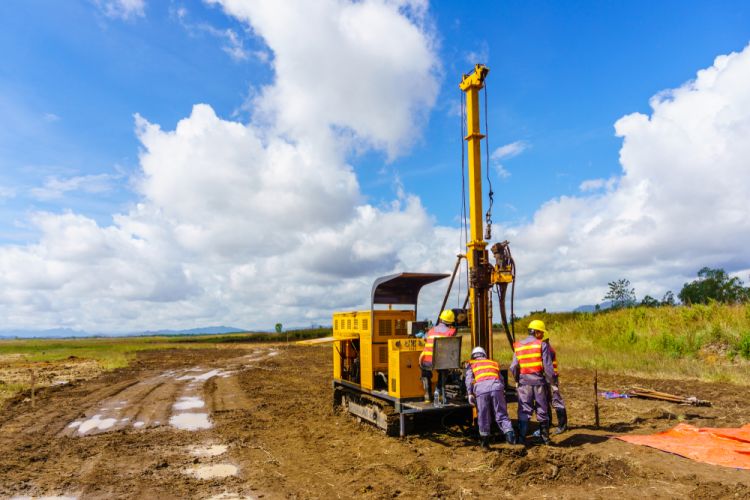The Ultimate Guide To Geotechnical Engineering For Construction Projects
The Ultimate Guide To Geotechnical Engineering For Construction Projects
Blog Article
8 Easy Facts About Geotechnical Engineering For Construction Projects Described
Table of ContentsThe Single Strategy To Use For Geotechnical Engineering For Construction ProjectsAn Unbiased View of Geotechnical Engineering For Construction ProjectsGeotechnical Engineering For Construction Projects Can Be Fun For AnyoneGeotechnical Engineering For Construction Projects - QuestionsThe 10-Second Trick For Geotechnical Engineering For Construction ProjectsThe smart Trick of Geotechnical Engineering For Construction Projects That Nobody is Talking AboutAll about Geotechnical Engineering For Construction ProjectsGetting The Geotechnical Engineering For Construction Projects To Work
Accompanying this raised intricacy comes geological and environmental factors that affect the design of the foundation, which is probably one of the most fundamental part of any type of advancement. Individuals require to trust that structures, bridges, and roads will certainly stand the test of time. A Geotechnical engineer encourages on exactly how a framework can best be sustained giving its unique conditions What's hidden listed below the surface of the ground is most likely one of the most essential item of info that a Geotechnical Engineer is after.These samples are after that evaluated by the lab to establish soil composition (Geotechnical Engineering for Construction Projects). The break down of sand, silt, clay, and other materials existing in the soil, assists the designer identify what unique features the site has and what the ramifications of those may be. Obviously dirt structure is just one test that can be carried out on examples
What Does Geotechnical Engineering For Construction Projects Mean?
Based upon these examinations, there might be a lot more soil borings that are drilled, or the engineer may have adequate info from the initial examinations to make a recommendation to the customer on exactly how ideal to wage their task. Results are usually reported through borings logs which reveal the dirt composition and attributes at a variety of depths.
Geotechnical designers are in charge of understanding the homes of all-natural resources and using this knowledge to develop risk-free, economical designs for building and construction tasks. It is a crucial part of any civil engineering task, as it is used to figure out the suitability of a website for building and construction and to guarantee the framework's safety and security.
This includes performing lab tests on the samples and using geophysical techniques such as seismic refraction and electric resistivity surveys. This data is utilized to examine the website's viability for building and to establish the kind of structure that should be used. Geotechnical engineering examines soil problems, determines prospective dangers, chooses an appropriate structure system for the suggested structure, and establishes the very best structure layout for an offered task.
The smart Trick of Geotechnical Engineering For Construction Projects That Nobody is Talking About
The structure might become unstable or collapse without appropriate dirt stabilisation, bring about pricey fixings and possible injury. The stablizing process involves utilizing various strategies to boost the security of the dirt, such as compaction, grouting, and the enhancement of reinforcing products. Without dirt stablizing, the risks linked with construction jobs would certainly be much greater, and the outcomes much less reliable.
It is a process used to boost the homes of dirts. Geotechnical designers conduct site examinations to evaluate the soil's homes and recognize possible dangers. They likewise design structures and various other frameworks that require to be built on the site, taking into consideration the soil's features. They develop and carry out dirt stabilization strategies, such as adding concrete, lime, or other maintaining representatives, to boost the dirt's strength and stability.
Geotechnical Engineering For Construction Projects for Dummies
Geotechnical engineers are necessary in assisting to ensure that dirt stablizing is done properly so that the framework is safe and secure. Geotechnical design is additionally utilized to evaluate dirt conditions and recognize prospective hazards. This includes analyzing prospective flooding, landslides, and various other natural disasters that could influence the structure.
Geotechnical engineers utilize this expertise to do website investigations, soil, and rock screening, and to interpret the results to identify the proper layout specifications for a task. This details is Get the facts used to guarantee that the structure, retaining walls, inclines, and other structures improved or within the subsurface materials have adequate security and resistance to outside loads, such as quakes, wind, and water.
These frameworks need a deep understanding of the actions of the subsurface products, as well as the capability to take care of the impact of excavation and building and construction on the surrounding environment. Geotechnical engineers use their know-how to determine the appropriate style criteria for these frameworks, such as the dimension and form of the passage, the toughness of the sustaining rock, and the type and quantity of support called for.
Along with the design and building of frameworks, geotechnical design additionally plays an important duty in the rehabilitation and upkeep of existing frameworks. As structures age, they may experience deterioration or various other issues that impact their stability and efficiency. Geotechnical designers use their knowledge to evaluate the problem of these structures, recognize the root causes of the troubles, and establish strategies to resolve them.
All about Geotechnical Engineering For Construction Projects
In this write-up, I will discuss the duty of geotechnical engineering and the types of troubles geotechnical designers solve. Geotechnical designers (geotechs) are involved in virtually every great site kind of civil design job. Every structure is sustained by soil or rock unless it is drifting, flying, or dropping down.
Geotechs are typically most entailed at the beginning of a job. Geotechnical Engineering for Construction Projects. Some of the tasks that a geotech might be responsible for are investigating subsurface problems, establishing called for lab screening of dirt and rock, translating the subsurface expedition outcomes, and creating reports that document the website problems and supply referrals for foundations, fill requirements, incline security, etc
It is not unusual for geotechnical engineers to concentrate on just one of the locations detailed above and research that subject their entire career. Geotechnical engineering is an important element of any type of civil design task. Regardless of just how excellent a framework is built, it will certainly not be fantastic for long if the foundation is poor.
The Geotechnical Engineering For Construction Projects PDFs

Sometimes, things that might not appear essential become important years later when problems arise. One last thing to keep in mind: geotechnical design is married to geology. Regardless of exactly how terrific your design knowledge is, if something vital is missed out on in the geologic characterization at a website, your expertise may not conserve you.
He delights in creeping around on any landslide he can locate and spending time fly fishing on the water. I wish you enjoyed this week's blog post by visitor writer Jese Vance. I wish you'll join us.
How Geotechnical Engineering For Construction Projects can Save You Time, Stress, and Money.

It is crucial to recognize the dirt problem before designing the kind and depth of foundation needed for the structure. In order to recognize the subsurface dirt problem, a geotechnical examination is needed.
Not known Incorrect Statements About Geotechnical Engineering For Construction Projects
Once the examination results come, the Geotechnical Designer evaluations the report, which lays out the dirt and rock residential properties groundwater condition and the linked risks. The sort of foundation needed to build the structure is after that identified. Based on the suggestion of the Geotechnical Designer, the architectural designer after that develops the structure.
Report this page